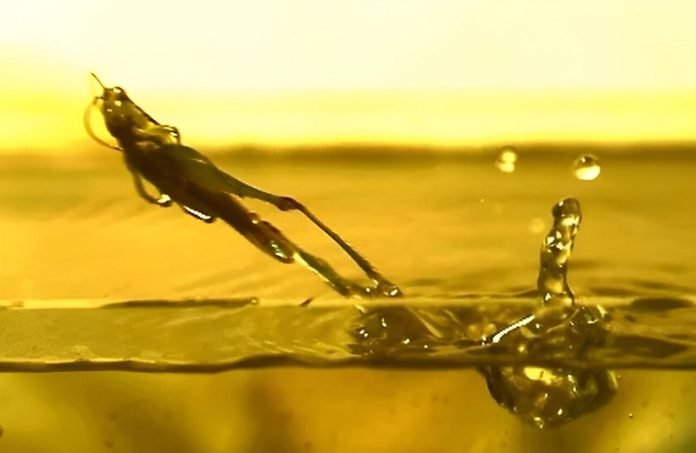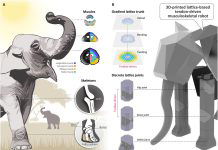
At Kiel University, a team of smart scientists led by Professor Stanislav N. Gorb is turning the natural world’s coolest tricks into awesome robot tech.
They’ve looked at how insects, spiders, and geckos stick to things and used those ideas to make robot arms that grab like a bug and sticky tapes that can come off cleanly.
But their latest project is something straight out of a sci-fi movie: a robot that can jump and swim just like a Chinese rice grasshopper.
The Chinese rice grasshopper, found mostly around the Yangtze River in China, is quite the acrobat.
Despite being a land creature, it’s surprisingly good at getting around in water. If it falls in, it doesn’t just float there; it can swim or even leap out of the water and take off flying.
Professor Gorb’s team, along with researchers from China, decided to study these grasshoppers to see if they could make a robot do the same tricks.
They started by putting 15 of these grasshoppers, which are about as long as a paperclip and as heavy as a paperclip to a few paperclips stacked together, into a big glass tank full of water.
The team then used high-speed cameras to capture every swim and leap these little critters made. After watching 48 jumps and 54 swims, the researchers figured out exactly how the grasshoppers pull off their water moves.
What they found was pretty cool. The grasshoppers use the water’s push-back to hold them up, kind of like how a life jacket keeps you afloat. For moving, they kick and push the water in just the right way to swim or jump out.
This was a big deal because most of the time, scientists see animals (and robots trying to act like them) either skim across water by being super repellant to it or by splashing really hard, both of which have their downsides when trying to design robots.
The grasshoppers’ technique, which hadn’t been fully explored before, offered a new blueprint.
It’s like they have a secret way of mixing staying afloat with smart moving that doesn’t need them to repel water like it’s the opposite team or waste a ton of energy slapping the water around.
Inspired by these findings, Gorb and his crew went ahead and built a prototype robot. This robot can mimic the grasshoppers’ amazing water moves, swimming and jumping by changing how fast its limbs move.
This breakthrough could change the game for robots, especially those designed to work in or around water.
So, what does all this mean for us? Well, imagine rescue robots that can jump across water to get to hard-to-reach places or environmental robots monitoring lakes without disturbing the ecosystem. The possibilities are endless.
This research is not just about making cool robots; it’s a reminder of how much we can learn from nature.
By studying how animals like the Chinese rice grasshopper move in their environments, scientists like Professor Gorb and his team are opening up new paths for robotics, showing us that sometimes, the best inspiration comes from the natural world around us.



